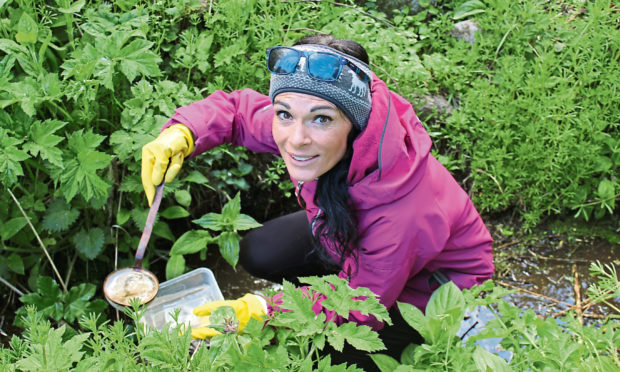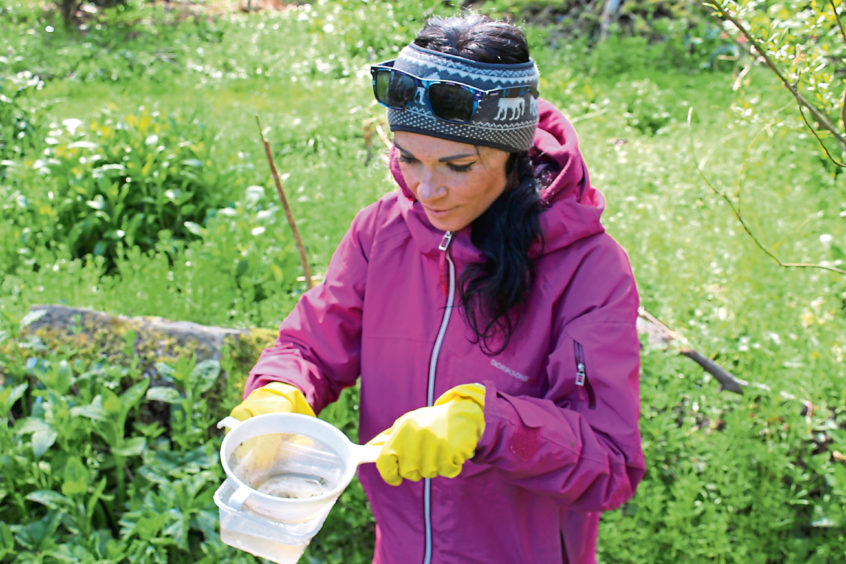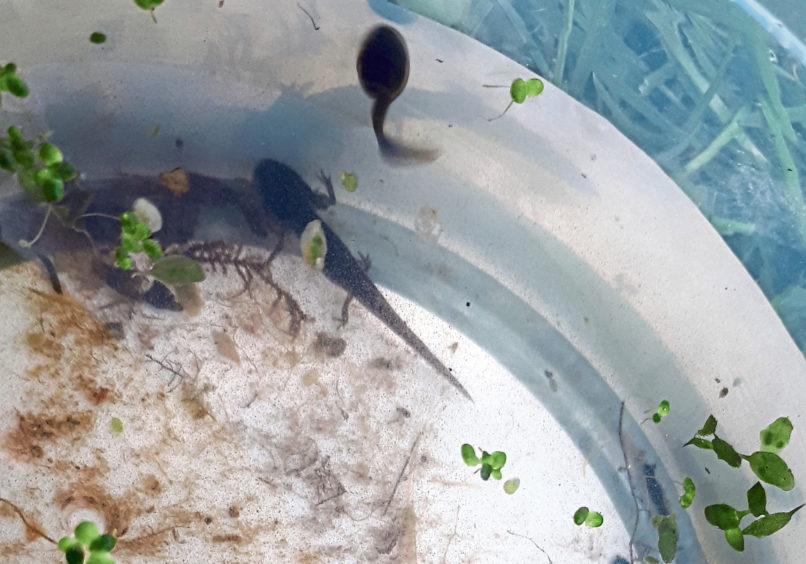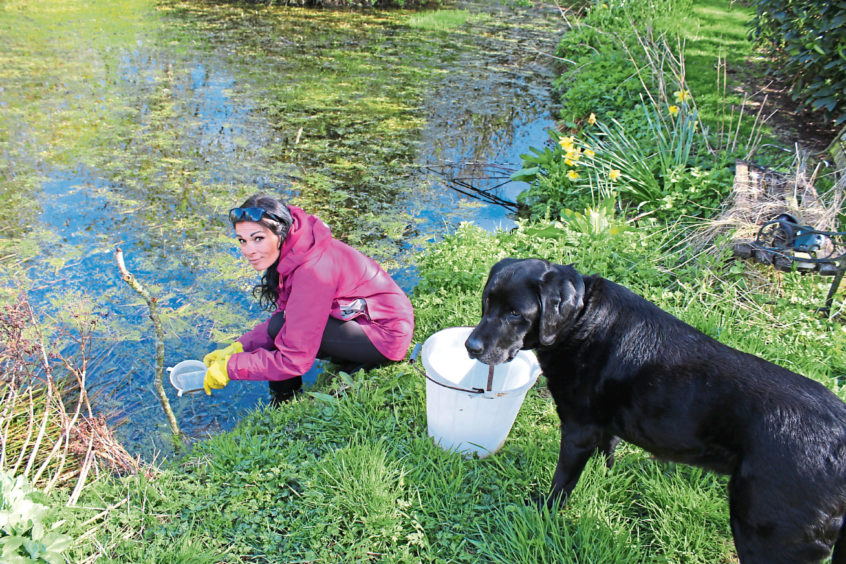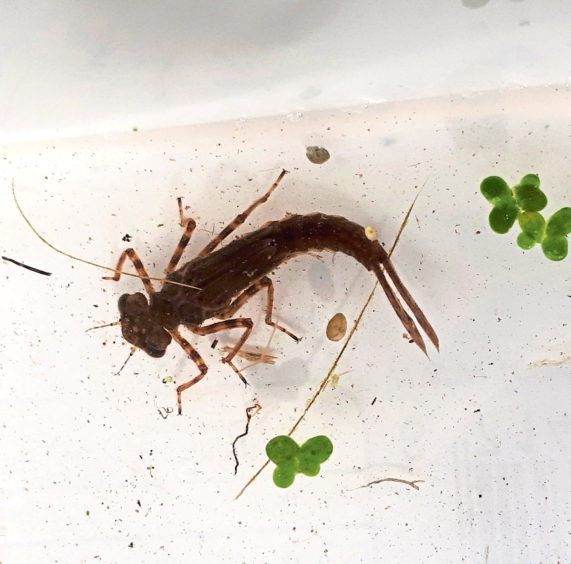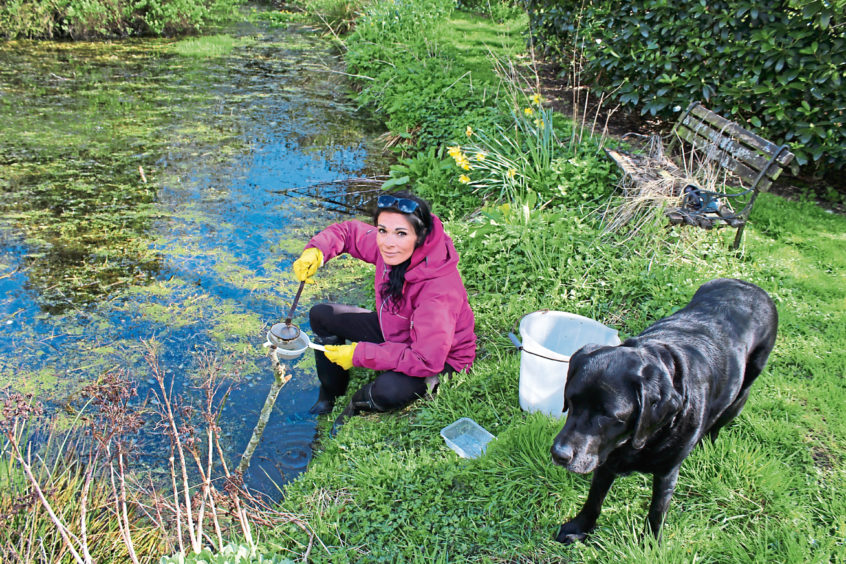There’s a panoply of weird and wonderful creatures waiting to be discovered by the inquisitive in ponds and ditches across the country, as Gayle finds out…
Frogspawn. I spotted clumps of it floating in a pond last month, the small black eggs suspended in a clear glutinous jelly.
There’s something absolutely fascinating about the weird, alien-like substance and the way it wobbles around. That and the fact it hatches into frogs is really rather staggering.
My recent spawn sighting got me thinking about what other creatures might be lurking in the ponds and ditches round my neck of the woods.
They’re a haven for wildlife – I often spot ducks and moorhens swimming around in my garden pond – and the murky world below the surface of the water is teeming with life.
It’s been a while since I went pond-dipping, and so after a quick reminder of what “tools” might be required for the job, I donned my wellies, gathered up an old sieve, ladle, bucket, magnifying glass and couple of clear plastic tubs and headed in the direction of the nearest waterway.
This happened to be a ditch at the bottom of the garden which was running clear… until I staggered into it and muddied the waters.
Undeterred, I squatted down and began scooping some clear water from upstream into my bucket.
My next step was to dip an old ice cream tub into the water and gently sieve the contents.
I was beside myself with joy and excitement when, within a couple of dips, I had netted three tadpoles, a beetle, some tiny snails, a bizarre brown scorpion-like creature with scary-looking pincers, and what would later turn out to be a water louse.
After a few more scoops of the ditch, I found an assortment of miscellaneous beasties and having snapped them all on my camera and taken some video footage, I released them gently back into the water.
Pond dipping, I realised, was addictive, and while keen to discover the identities of all these curious critters via the art of Googling or looking up books, I had another water source yet to investigate – the garden pond.
Aware it was quite deep in places, I cautiously skirted the edges, dipping one welly into the water and keeping the other on terra firma.
Alas, the welly soon began to fill with water as my foot sunk into the rather stinky mass of fermenting pond weed and mud beneath.
Nevertheless, I managed to net an exciting haul of pond life – another couple of tadpoles, some water fleas, and a load of unidentified tiny squirming things.
My final catch was the most fascinating of all. This creature, although small, looked like something out of a horror movie when magnified, with its bug eyes, six crooked legs, jutting antennae and two tails. Arghh!
I had absolutely no clue what this beast was, but after watching him swim and jerk around erratically, and, it seemed, rather aggressively, in my old Carte D’Or tub, I took some photos and then plonked him back into the water.
Maybe he’d have been happier if he’d been swimming around in a Ben and Jerry’s carton…
Back inside, I washed out all my dipping tools and searched the house for wildlife books that would allow me to identify my treasures.
I found two – A Field Guide in Colour to Plants and Animals by Jan Toman and Jiri Felix, and a Reader’s Digest Guide to Britain’s Wildlife, Plants and Animals.
Thanks to these tomes (and some Googling), I was able to identify a water slater, a water flea, a water mite and a great diving beetle, which was described as “fiercely carnivorous”. The bug with the pincers turned out to be the larva of a great diving beetle.
I also discovered there’s a thing called a screech beetle which apparently screeches in alarm if picked up, has prominent eyes and feeds on worms. I’m rather glad I didn’t find one of them!
Despite all this fun research, I still had no idea what the two-tailed, bug-eyed beast that had a penchant for fine ice cream was, so I contacted Courier nature writer Keith Broomfield to see if he might know.
He reckoned it was a stonefly nymph and told me: “Stoneflies are fussy in their requirements and finding one is a good indicator that the pond or ditch they came from is clean and unpolluted.” That’s great news as far as my pond is concerned!
Pond or ditch dipping is great fun at any time of the year but right now until August is when you’ll find wildlife is at its most active, with nymphs, larvae and spawn transmogrifying completely and some of it sprouting legs and wings.
Happy dipping!
info
If you happen to have a garden with a pond or a ditch, great! But if not, there’s bound to be a waterway in a green space not too far away.
You’ll need an old sieve, a long-handled net (if you’ve got one), an empty white tub or plastic tray, a magnifying glass, an ID guide (maybe a book or you can check online later), a camera, a towel to dry off your hands, and a pair of wellies.
A top tip is to sweep your net or sieve slowly through the water – a figure of eight shape works best.
Then lift it up and carefully turn it inside out so anything you’ve caught drops into the container.
You can then use your spoon to scoop anything up and get a closer look.
When you’re done noting down what you’ve found and taking pictures and video, carefully pour the water from your container back into the pond and make sure all the creatures are safely returned.
